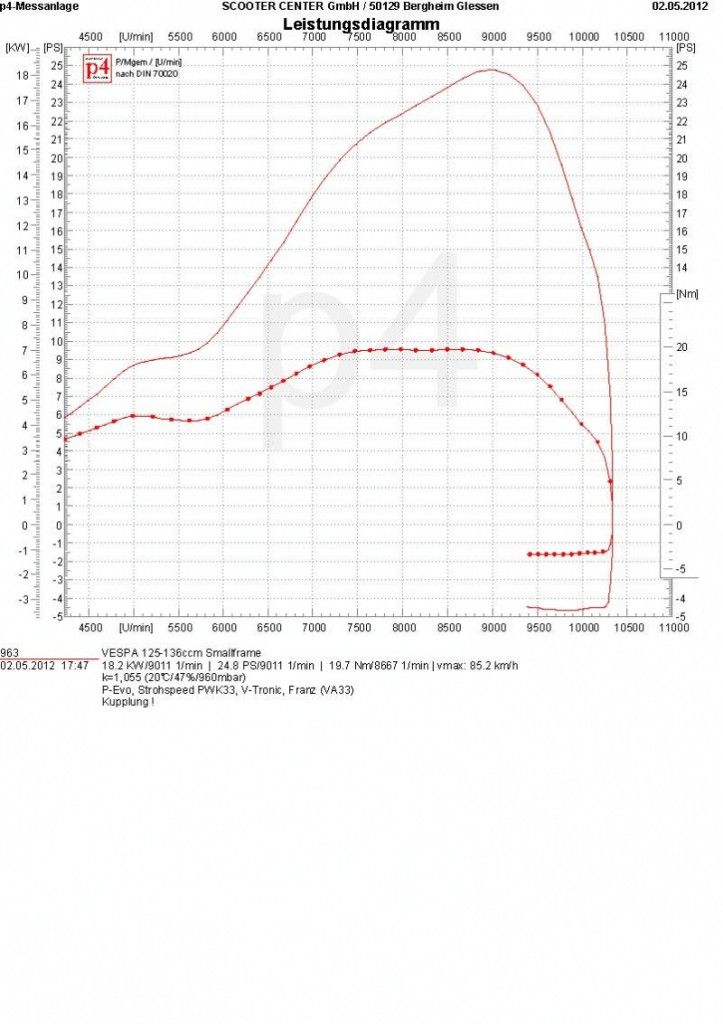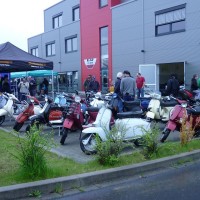On the test bench: Polini Evo 133ccm, Strohspeed, PWK33, Ludwig & Scherer Franz
The ESC season is just around the corner and with it the preparations. This year we will see new engines and vehicles on the racetracks in Germany, France, Austria and Hungary.
A typical K1 engine has appeared on our test bench and is checked for its performance and functionality.
The ESC rules accordingly, the stroke is limited to 51mm.
Hence in this case one comes BGM crankshaft with 51mm stroke and 105mm connecting rods are used.
The one enthroned on the case Polini Evo is from one, with 0,35mm carbon material converted to 2 flaps Polini membrane with Strohspeed intake manifold ventilated. For the mixture preparation there is a 33 Keihin responsible. To keep the crankcase clean, the air is passed through a Marchald air filter sucked in. The very good air throughput of the Marchald filter and the resulting very low power dissipation in the per mille range make this filter, which has been tried and tested on the road, also interesting for racing use.
Ignition is via Vespatronic, which is set to 24-16.
On the outlet side, the K1 will be represented by one French charged.
Good torque values and moderate speeds make this exhaust very interesting for the circuit.
The power generated is currently still on a reinforced XL2 coupling DRT Runner countershaft transferred, but more on that in a moment. Now first curve discussion:
All in all a typical Franz engine, Reso entry between 5500 and 6000 rpm, peak at around 9000 rpm and funny overrev up to 10.000 rpm.
With 11PS at 6000 rpm in the ascent it is also quite pleasant to drive.
With over 20 hp from 7300 rpm to approx. 9700 rpm, you can always move in the power range if necessary thanks to the Runner auxiliary shaft.
Now comes the crux of the matter, the clutch apparently disengages at the torque applied here, at almost 20Nm it's simply over. That means in plain language, the engine is opened again and it becomes a Hartz4 coupling installed.
Perhaps then something will change in terms of power and torque.
Even if the performance does not increase any further due to a clutch that does not slip, at least wear is stopped. A slipping clutch is likely to burn within a few laps on the racetrack or on the road after a trip in the country and can also result in consequential damage.
Maybe we can still find time to make a portmap of the cylinder.





Leave a Reply
Want to join the discussion?Feel free to Contribute!